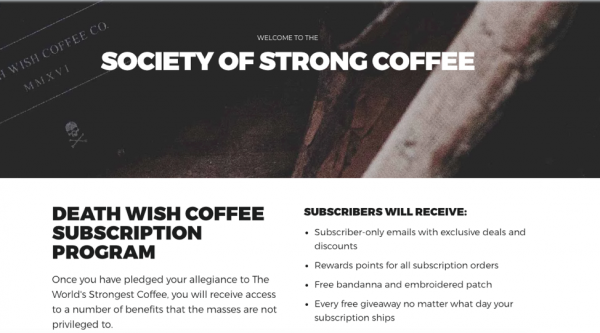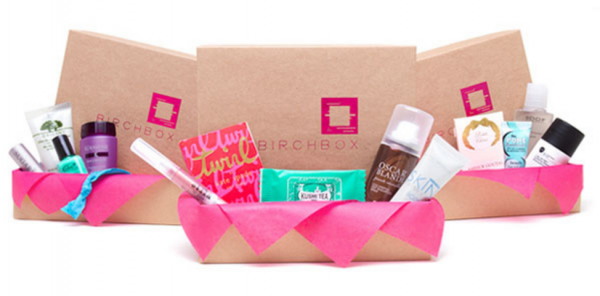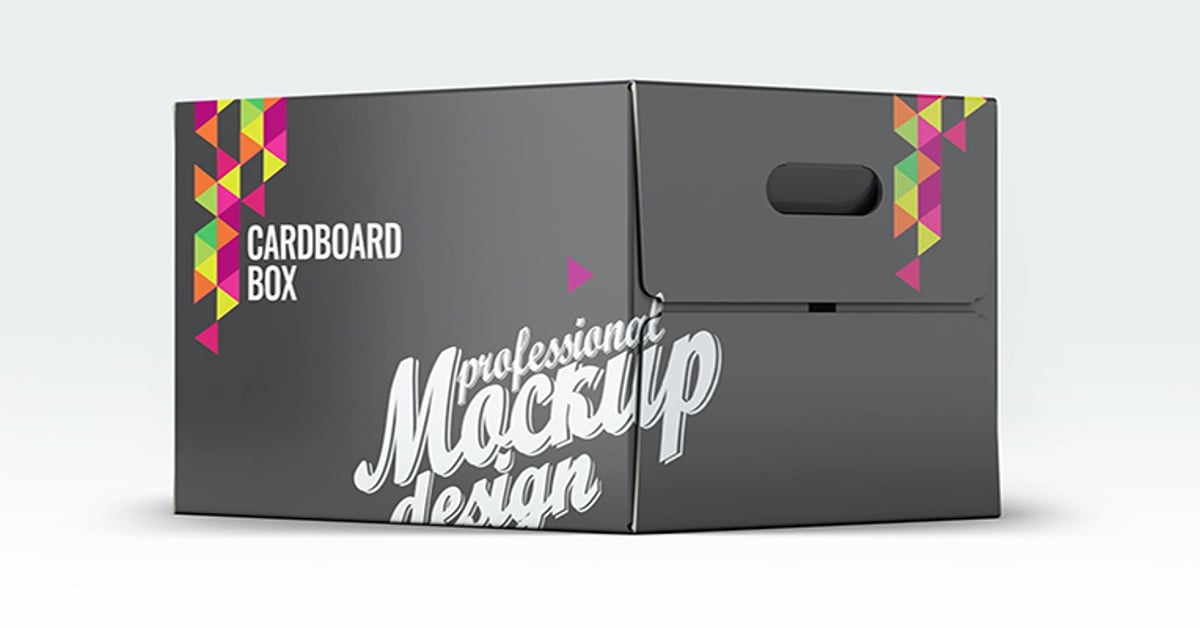Subscription services in the ecommerce industry have grown immensely in recent years. The subscription ecommerce market is expected to grow at 68% year over year from 2019 to 2025 to reach US$ 478.2 billion by 2025. According to the Subscription Trade Association (SUBTA), 75% of direct-to-consumer (DTC) organizations will offer subscription services by 2023.
Consumers are increasingly attracted to the convenience and wider range of choice offered by these services, which have proved particularly popular among millennials. While subscription services gained prominence from specialty box companies like BirchBox, BarkBox, and FabFitFun, new technology has opened the door for direct-to-consumer brands to own this relationship with their customers.
So how do brands establish their subscription service? How do subscription services work and what are the operational and logistical aspects that you need to consider? And which companies are getting it right?
In this article, we’ll cover what retail subscription services are, how they can benefit your business, and the obstacles you’ll need to navigate to offer these services to your customer base.
How Retail Subscription Services Work

The subscription business model offers products or services in exchange for a recurring fee, usually on a monthly or yearly basis. There are two approaches companies can take with subscriptions:
- Subscription plans, such as the Hubble Contacts Subscription. The goal of these services for retailers is to retain customers that have already been acquired, focusing on repeat revenue opportunities from individual customers.
- Subscription box services, including FabFitFun. The goal of these services is to increase exposure and convert subscribers to new customers by featuring your products in the boxes.
Both approaches help to create a steady flow of recurring revenue, increases customer lifetime value, and provides a method to offset acquisition costs.
Successful subscription services can help brands establish a consistent revenue stream. Four main categories of subscription services exist:
- Convenience boxes satisfy a consumer's need for disposable products like sanitary products or shaving equipment.
- Discovery boxes involve hand-picked items that are curated by the seller to expose them to a new or niche product, often with luxury items like whiskey samples.
- Access boxes provide a more exclusive connection to new product releases like tickets to media events or early access to new video games.
- Subscription plans allow customers to subscribe to receive a specific product regularly for a discount, removing the need for them to make repeat purchases.
The planned nature of the business model optimizes logistics on the retailer end. With less redundancy, waste, and a guaranteed forecast of inventory and shipments, subscription services free up resources that can be better devoted to things like customer service.
This model has proven hugely popular in the global ecommerce market in recent years - the industry has seen an average compound annual growth rate (CAGR) of almost 18% annually, and major brands like Gillette and Sephora offer these services to their customers.
Already convinced you need to add subscription boxes to increase your customer base? Then check out our directory of subscription box partners to find one that works best for your brand.
Secret to Success: 5 Successful Subscription Services
Retail subscription boxes are useful for several reasons.
With convenience boxes, customers benefit from time saved, a reassuring routine, and potential money savings if provided at a discounted price. The dynamic is emotive with discovery boxes, where the anticipation of gratification coupled with the unknown of what’s inside each box creates the appeal. The feeling is one of tapping into another’s expertise and taste with no effort spent, heightening customer experience, and ideally leading to word-of-mouth sharing on social media.
Looking at success stories in this niche is an excellent way to grasp the value presented to customers.
Menlo House Club

For $60 a month, this discovery subscription box for men offers a couple of fashionable clothing and footwear items. Members fill out a quiz that determines the style of clothing members receive. Menlo House provides a discounted price of $20 for the first month to entice customers to try the offering and also offers sitewide discounts to encourage members to purchase additional items.
This subscription model aims to offer an effortless way to keep on trend with high-quality pieces when bundled together, presenting a cost-saving into the bargain.
Quip Refill Plan

Quip's service presents itself as a hassle-free means to maintain perfect oral hygiene. By playing on dentists' constant reminders to change one's toothbrush every few months with eliminating the inconvenience of charging electric toothbrushes, Quip is an excellent example of an effective convenience box subscription.
For $25 upfront and $5 per month for brush head, battery, and toothpaste refills, customers don’t have to worry about their toothbrush setup again and it works out cheaper than replacing conventional electric toothbrushes.
Death Wish Coffee Subscription Program

Death Wish Coffee has a committed customer base that they further solidify their relationship with through its subscription program. Subscribers get access to weekly, bi-weekly, or monthly deliveries of coffee packs, K-cups, or cold brew cans at 20% off the standard price. Additional perks of the program include exclusive merchandise and automatic inclusion in free product giveaways, and first access to limited edition mugs.
Death Wish takes its subscription service a step further by linking it to its Death Wish Stash Cash rewards program. Users can earn points with each subscription order that is shipped, further incentivizing them to stay on the program to get even more rewards.
Curious to see how Death Wish Coffee keeps up with the combined volume of their subscription and ecommerce orders? Check out this case study.
Perfect Keto Subscription

Perfect Keto, an Extensiv Order Manager customer, is a snack and foodstuff company for followers of the low-carb ketogenic diet. They have successfully created both a standard ecommerce store and a subscription element, offering customers discounts for subscribing to deliveries of their favorite products.
Their subscription service costs $40 per month, and they incorporate an “access box” dimension by offering new products and promotions to subscribers first, driving customer loyalty.
BirchBox

BirchBox is a heavy-hitter in the subscription niche, and with good reason. The beauty product subscription retailer leverages intelligent techniques for keeping its customers hooked: personalization/choice in what goes in the box, a “beauty profile” based on a quiz filled out by the customer, and the ability to buy (at a discount) a full version of any of the samples that came in the box.
This approach, coupled with a very enticing online sales funnel, has brought massive success to the startup. The BirchBox subscription service is priced ranging from $15 to $13 per month, with the yearly option priced the lowest.
Now that we've taken a look at examples of how these services work let's consider whether a retail subscription business model is a fit for your business.
Benefits of a Retail Subscription Service
It is clear why subscription box businesses have become something of a Holy Grail in the retail industry. They can compensate for many business drawbacks on the broader ecommerce world, as well as benefiting your entire business.
For small and even larger businesses, cash flow and supply chain scheduling efficiency are a battleground. Under or over-utilized resources directly impact profitability, while bad months can put your business at risk and cause adversity (in fact, most small business failures are due to cash flow problems). Subscription business models factor out much of this uncertainty, with monthly recurring revenue (MRR) proving far more stable than the ups and downs of conventional retail.
Here are some of the proven benefits of retail subscription service:
- Churn: This is the master metric for recurring-billed businesses. The fewer customers you churn out, the more you keep, the better your balance sheet looks. Subscription services help reduce churn by continually providing value through new product discovery or discounts, making it harder for customers to unsubscribe.
- Customer Acquisition Cost (CAC): How many dollars do you spend on average for each new customer? CAC can make or break a company, even if it manages to keep churn low. Subscription services offset this metric by creating steady cash flow from returning customers.
- Net promoter score/ “Viral factor”: Part of CAC, the word-of-mouth promotion that results from happy customers can be a boon to your marketing initiatives. But even satisfied customers don't necessarily make good evangelists; you should actively seek to get them to spread the word through things like referral programs. Subscription businesses stand to gain a lot from this since a one-off purchase can be forgotten, but building a persistent relationship with the customer will create more chances for them telling their friends and family about your product.
- Average Revenue Per User (ARPU): This metric tells you how much each customer is worth currently. It analyzes your ability to upsell. Perfect Keto and BirchBox are examples of good upselling, wherein customers often buy other products outside of their subscription boxes.
- Inventory Management: If you have products that are slow-moving or are looking for an easy way to sell the excess inventory for discontinued products, subscription services are a great inventory management strategy. It can help reduce the inventory age of your product portfolio while also helping you to save profit on products you'd otherwise dispose of.
Subscription-based businesses create a sense of community and presence for you in the customer’s life. If you can consistently delight a customer over a few months, then customer loyalty will run high.
Beyond customer loyalty, brand-strengthening opportunities are plenty in retail subscriptions. The personal nature of regularly supplying products to the customer creates more touchpoints and opportunities to keep your company top of mind. If customer loyalty represents how the customer sees you, the brand represents what they see you as being.
Most companies will have a niche in mind for a possible subscription box business. With any niche, one of the problems is finding fresh leads. There are only so many potential customers in any niche, and reaching them can be expensive. Subscription models drive up the Customer Lifetime Value of every customer, leaving less need for lead generation and new customer acquisition.
Challenges of a Retail Subscription Service
While retail subscription services can be highly lucrative for retailers, they're not without their problems. There are issues of capital, declining quality, and competition to navigate before establishing a successful service for your customers.
Capital
If you don't have the cash to fund a subscription service, a capital investment might be required to kick off development. Like any investment, there is a degree of risk involved. Of course, there are ways to manage that risk as well. Business owners can test or even launch a subscription service for little investment by leveraging freebies.
They could also skip making an ecommerce site and process payments manually. One potential problem to note with this approach is scaling. Many subscription service owners run into difficulty once they try to scale up users and their supply chain. This can create problems when it comes time to source more expensive products, pay for professional shipping, and build a proper ecommerce website, so the above approach is to be considered a lean, short-term solution only.
Declining Quality
Subscription services are popular because they are new and do the job the customer wants. But as a business grows, it can be easy to intentionally or unwittingly cut corners as pressure to fulfill orders increases. Furthermore, the novelty can wear off for users if you fail to keep things fresh, and even the best ideas can run out of creative steam and lead to flat customer experiences.
Retailers should adopt a tenacious approach to these services. While they can effectively retain customers as repeat buyers, subscription services should not be considered passive income. It's essential that your offering is viewed as a living, evolving concept that continually aims to meet the current needs and wants of your customers.
Competition
With the popularity of this method of selling comes competition, too. Many of your competitors may also be seeking to incorporate subscription services into their business models to capitalize on the benefits it offers. On top of that, once you launch, your idea can be easily replicated or substituted.
Cloning and undercutting offerings are commonplace, and you'll need to keep a close eye on the competition to make sure that your service outshines the rest. One way to offset competition is to cultivate close relationships on social media with your customers and to offer a personalized experience.
How to Start a Retail Subscription Service
By following the steps below and avoiding the common pitfalls of retail subscription services we’ve listed, you’ll have what you need to create an attractive subscription service for your customers.
Brainstorming
The first step to starting a retail subscription service is brainstorming your ideas. Consider the niche you operate in and how your competitors are approaching the market. Go over any market research you have relating to your customer base and consider what they want. Which products do they use often? Which products do you think they'd like to receive? Once you have an idea of what kind of offering you'd like to make, the next step is pricing.
Pricing
Pricing plays a huge role in the success of any subscription service offering. CrateJoy recommends a profit margin of at least 40% for a sustainable offering, so keep that in mind when planning. They’ve also created a subscription box calculator to help with pricing.

Prototyping and Promoting
For physical goods, building a prototype box will help you get a sense of the quality your customers are receiving in terms of packaging and presentation, as well as the goods inside. You can prototype with a simple cardboard box, but you may want to explore custom branding options as well.
For physical and digital goods and services, creating an image library to promote your box is essential. Start curating images that show the value and appeal of your subscription service. When your prototype is ready, you can begin advertising your subscription box on your site. Many retailers believe that they need to wait until prototyping is complete before they start promoting, but this is not the case. Starting once your marketing materials are ready can save time and generate early interest, streamlining your path to launch.
Launch
Launching a subscription service is one of the most exciting phases of your new business model. A successful marketing campaign will lead to pre-orders for your subscription box. You may want to do a countdown to launch, or as we've seen with Menlo House, some retailers like to offer a discounted first month to help draw in customers. You can use your site or a service like Shopify for your marketing campaign.
On the back end, there are some logistics to work out before you launch. Consider the availability of products through your supply chain, delivery times from your supplier to yourself, and seasonal customer demand for your offering. You can make use of demand forecasting to help predict demand and manage your inventory needs.
Once interest has been cultivated and your boxes are ready to ship, you can launch your offering and gather data on its performance. As we’ve discussed, you’ll need to monitor and adjust your offering to optimize its performance among your customers.
Final Thoughts
Once you’ve taken the time to learn about the benefits and drawbacks of subscription services, you can identify whether this is a suitable approach for your business. Ecommerce retailers in many markets can find lucrative opportunities to use this approach, so consider your customer needs and behavior and try planning out a subscription service offering that might work for your business. The median number of subscription service users subscribe to two different services, so it may be that you can even launch multiple offerings to capitalize on this rapidly growing niche in the ecommerce market.







